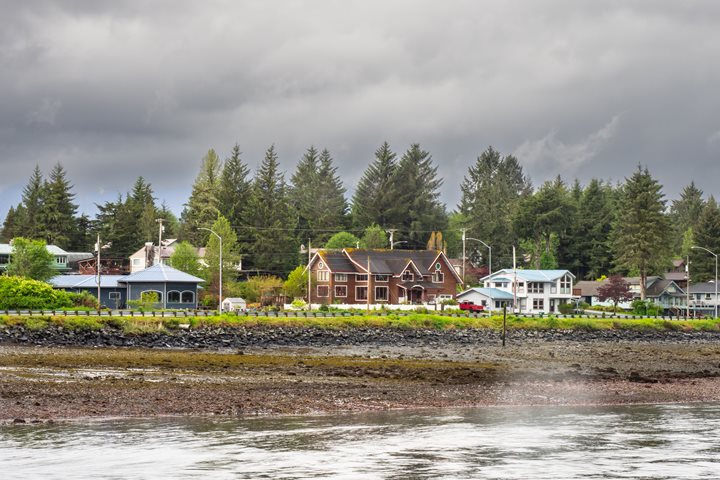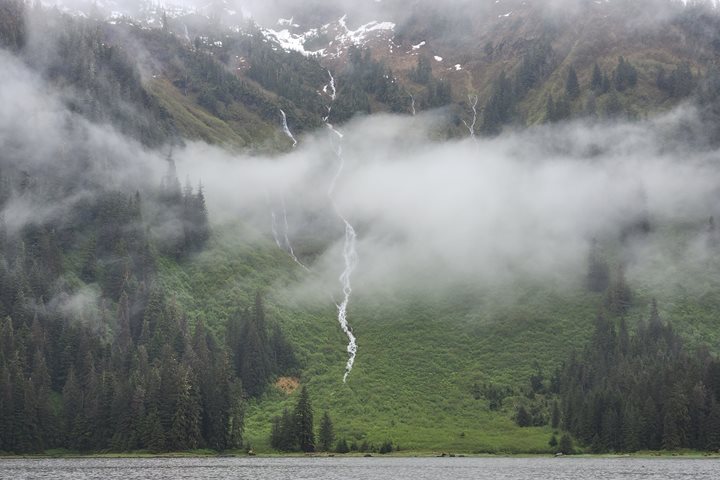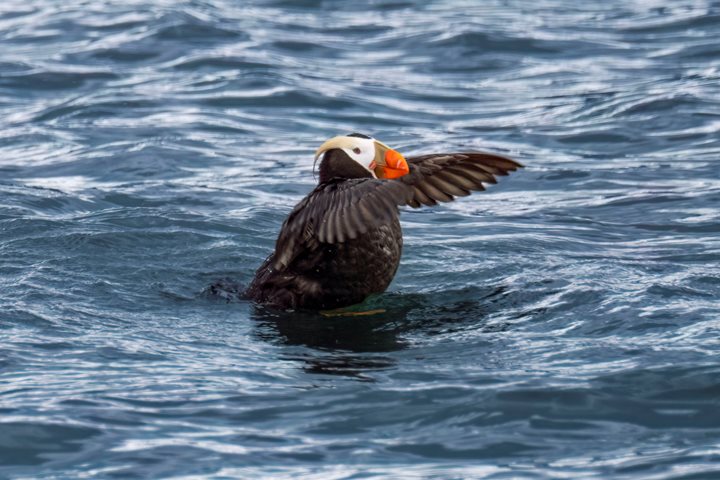What could be better than waking up in front of a breathtaking landscape? Well, that is exactly what we did this morning when we had the chance to admire the beautiful Margerie glacier before breakfast; after having picked-up a National Park Ranger and a Tlingit Cultural Interpreter last night in Gustavus, the National Geographic Sea Bird navigated all night long through the 57-mile-long bay to be in front of the glacier. Glacier Bay National Park and Preserve is an immense protected area that includes numerous glaciers, but the Margerie is possibly its most famous one. It certainly is impressive with its magnificent spires of ice, its thunderous sounds, and its frequent calving episodes. Much less conspicuous but very important, is the Grand Pacific glacier, its quiet neighbor. Covered with dirt and rocks gathered by one of its tributaries, the Ferris glacier, the Grand Pacific looks like an innocuous hill but is actually the glacier that carved the whole bay.
After having witnessed numerous great calvings, we headed south towards Russell Island looking for wildlife; we were not disappointed, as we found a brown bear sow with her two cubs walking along the shoreline. We watched them for a long time, enjoying the playful nature of the two cubs, until they disappeared in the vegetation. What a beautiful sighting!
Our next destination was the Johns Hopkins inlet, at the end of which is the gorgeous glacier of the same name. Johns Hopkins glacier is really impressive by itself, but when you get the chance to see it in a stupendous, cloudless day like today, is really unbeatable! We also had the chance to learn everything about glaciers and about this 3.3 million-acre park from our visiting park ranger, and about its spiritual and cultural significance for the Tlingit people from our cultural interpreter.
The National Geographic Sea Bird crossed the bay once again and sailed south along its eastern shore; we soon spotted several mountain goats, including one that was grazing pretty close to the water and regaled us with a great view. Bald eagles, ravens, puffins and other birds complemented the landscape. However, we really reached the birding hotspot late in the evening when we arrived to South Marble Island, where many horned and tufted puffins, pelagic cormorants, glaucous-winged gulls, black oystercatchers, and black-legged kittiwakes flew all around us and the abundant Steller’s sea lions that rested on the rocks. What a beautiful place full of life!







